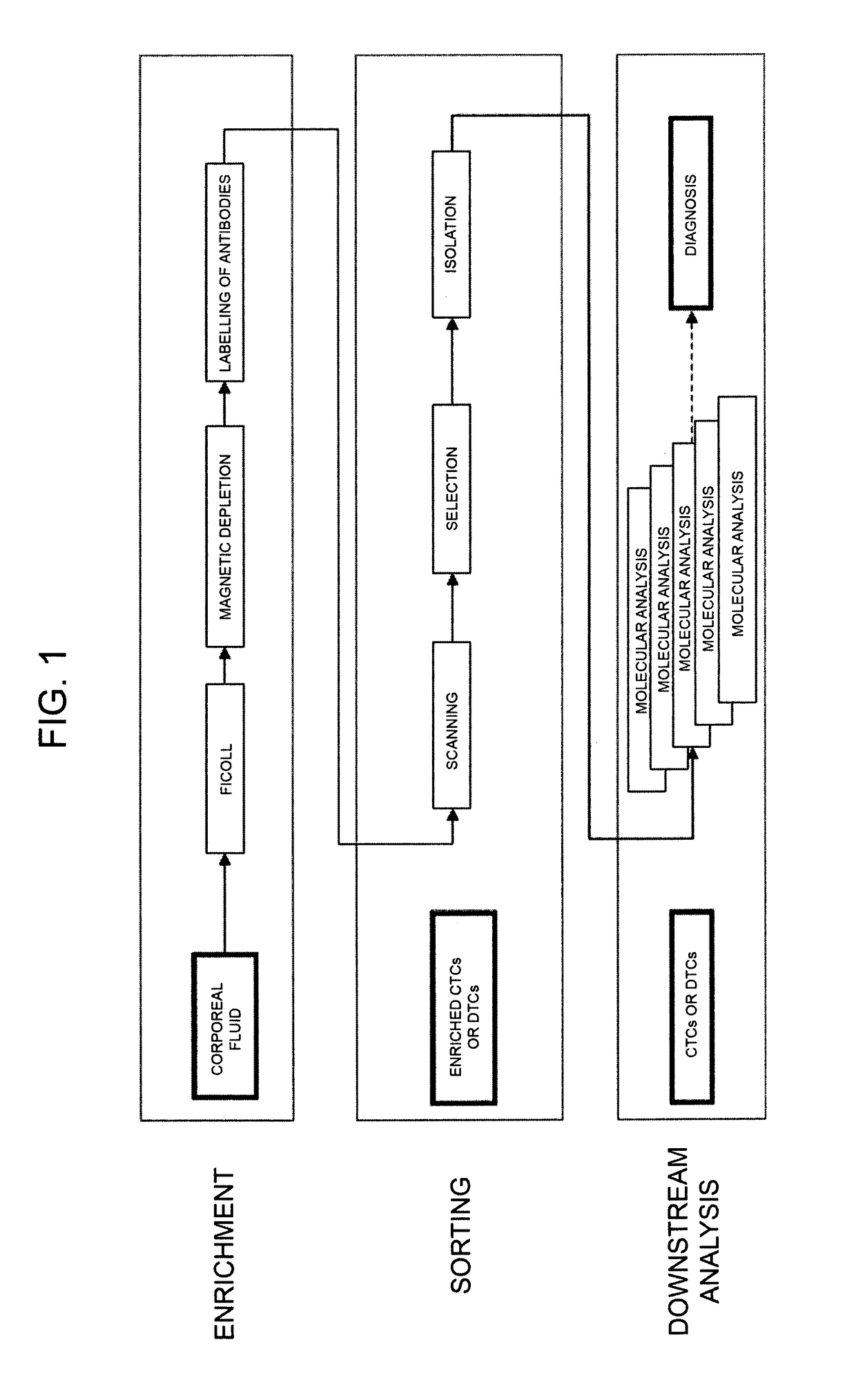Method for identification, selection and analysis of tumour cells
a tumour cell and selection technology, applied in the field of tumour cell identification, selection and analysis, can solve the problems of low sensitivity and specificity, widespread dosage of psa, poor sensitivity and specificity, and non-negligible costs for the health system, etc., to achieve high diagnostic and predictive reliability, high purity, and high accuracy.
- Summary
- Abstract
- Description
- Claims
- Application Information
AI Technical Summary
Benefits of technology
Problems solved by technology
Method used
Image
Examples
example 1
[0175]Non-invasive evaluation of mutations (for example, in the K-RAS gene) in cancer patients.
[0176]Described in what follows is the case of isolation of CTCs from peripheral bloodflow of patients affected by metastatic Colon-Rectal Cancer (mCRC).
[0177]A specimen of 7.5 ml of peripheral bloodflow was drawn from the patient in Vacutainer tubes with EDTA anticoagulant (Beckton Dickinson). The specimen was analysed with Coulter Counter (Beckman Coulter) and presented 42×106 leukocytes (WBCs) and 43.95×109 erythrocytes (RBCs). The PBMCs were then isolated via centrifugation (in Ficoll 1077). The PBMCs recovered (16.5×106 on the basis of the count with Coulter Counter) were washed in PBS with BSA and EDTA (Running Buffer, Miltenyi) and were selected via depletion with magnetic microbeads conjugated to anti-CD45 and anti-GPA antibodies (Miltenyi) according to the instructions of the manufacturer. The resulting cells (negative fraction for CD45 and GPA) were fixated with 2% PFA in PBS for...
example 2
[0191]Evaluation on CTCs of deletions (for example, in prostate cancer) via single-cell whole-genome amplification and CGH array. In this case, there is advantageously performed isolation of the single cells to be recovered in different wells. In this way, the analysis takes into account the heterogeneity of the population, and supplies not only the average, but multiple signals regarding each cell so that it is easier to identify mutations present only in some of the tumour cells.
example 3
[0192]Non-invasive identification of the original tissue in CUP tumours, via genetic profile and / or profile of expression of the CTCs.
PUM
| Property | Measurement | Unit |
|---|---|---|
| volume | aaaaa | aaaaa |
| first wavelength | aaaaa | aaaaa |
| third wavelength | aaaaa | aaaaa |
Abstract
Description
Claims
Application Information
 Login to View More
Login to View More - R&D
- Intellectual Property
- Life Sciences
- Materials
- Tech Scout
- Unparalleled Data Quality
- Higher Quality Content
- 60% Fewer Hallucinations
Browse by: Latest US Patents, China's latest patents, Technical Efficacy Thesaurus, Application Domain, Technology Topic, Popular Technical Reports.
© 2025 PatSnap. All rights reserved.Legal|Privacy policy|Modern Slavery Act Transparency Statement|Sitemap|About US| Contact US: help@patsnap.com



